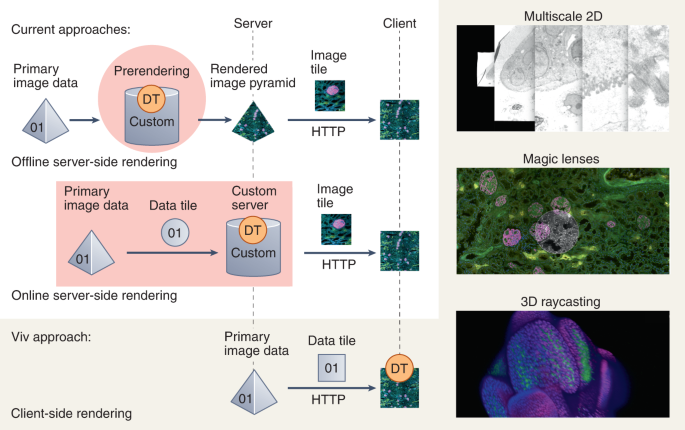Introduction: Beyond the Hype of Mainstream Frameworks
In the fast-paced world of web development, the headlines are often dominated by React News, Vue.js News, and the ever-evolving ecosystem around them. While these frameworks are powerful and have shaped the modern web, a landscape rich with innovation exists just beyond the spotlight. Among these compelling alternatives is Marko.js, a declarative, high-performance UI framework developed and battle-tested at eBay. Marko isn’t just another JavaScript library; it’s a paradigm that prioritizes server-side rendering (SSR), streaming, and fine-grained reactivity from the ground up. Unlike frameworks that treat SSR as an add-on, Marko was built for it, making it an exceptional choice for content-rich, performance-critical applications like e-commerce sites and news portals.
This article provides a comprehensive technical exploration of Marko.js. We will dissect its core concepts, from its unique single-file component syntax to its virtual-DOM-less reactivity model. We will walk through practical implementation details, build components, handle asynchronous operations, and explore advanced features like HTML streaming. By the end, you’ll understand why the latest Marko News is worth following and how it offers a compelling alternative to giants like Next.js and Svelte, providing a unique blend of developer experience and raw performance that can redefine how you build for the web.
The Foundations of Marko: Declarative Syntax and Fine-Grained Reactivity
At its heart, Marko is designed for simplicity and performance. It achieves this through a unique combination of a familiar, HTML-like syntax and a powerful compiler that transforms declarative components into highly optimized, imperative JavaScript. This approach sets it apart from the VDOM-centric model popularized by React, aligning it more closely with the compiler-first philosophy seen in the latest Svelte News and SolidJS News.
The .marko File: A True Single-File Component
Everything related to a Marko component typically lives within a single .marko file. This file can contain the component’s structure (HTML-like syntax), its logic (JavaScript), and its styles (CSS). This co-location simplifies development and maintenance, providing a clear and concise representation of the component’s scope.
A .marko file is divided into three main parts:
- Static HTML-like markup: The template for your component.
- Dynamic placeholders: Using
${...}for expressions or custom tags for control flow. - Component logic: Defined within a
class { ... }orstatic { ... }block, where you manage state and behavior.
State Management and Fine-Grained Reactivity
Marko’s reactivity model is its secret weapon. When you update a component’s state, Marko doesn’t re-render the entire component or perform a complex VDOM diff. Instead, its compiler understands exactly which parts of the DOM depend on that specific piece of state. It then generates precise, targeted code to update only those specific DOM nodes. This fine-grained approach minimizes overhead and leads to incredibly fast updates. Let’s see this in action with a classic counter component.
<!-- counter.marko -->
class {
onCreate() {
// Initialize the component's state when it's created
this.state = {
count: 0
};
}
// Method to be called from the template
increment() {
this.state.count++;
}
// Another method to demonstrate passing arguments
incrementBy(amount) {
this.state.count += amount;
}
}
<style>
.counter-container {
border: 1px solid #ccc;
padding: 20px;
border-radius: 8px;
text-align: center;
}
.count-display {
font-size: 2rem;
margin: 10px 0;
}
.action-button {
font-size: 1rem;
padding: 8px 16px;
margin: 0 5px;
cursor: pointer;
}
</style>
<div class="counter-container">
<h3>Marko Counter</h3>
<div class="count-display">${state.count}</div>
<button class="action-button" on-click("increment")>
Increment
</button>
<button class="action-button" on-click("incrementBy", 5)>
Add 5
</button>
</div>In this example, when the increment method is called, this.state.count is updated. The Marko compiler ensures that only the text node inside the <div class="count-display"> is changed, without touching any other part of the DOM. This is far more efficient than the approaches seen in older libraries like the original jQuery News, and even more targeted than many modern VDOM-based frameworks.
From Components to Applications: Structuring Your Marko Project

Building a full application requires more than just individual components; it demands a clear structure for composition, data flow, and project organization. Marko provides intuitive patterns for these challenges, integrating seamlessly with modern tooling like Vite.
Project Setup with Vite
The modern Marko ecosystem is centered around Vite. The latest Vite News highlights its incredible speed and developer experience, making it a perfect match for Marko’s fast compiler. To start a new project, you can use the official starter template:
# Create a new Marko project using the Vite starter
npm create marko@latest my-marko-app
# Navigate into the project directory
cd my-marko-app
# Install dependencies
npm install
# Start the development server
npm run devThis command scaffolds a complete project with a development server, hot module replacement (HMR), and an optimized build process. This setup also makes it easy to incorporate other tools discussed in TypeScript News or styling libraries, providing a robust foundation for any application.
Component Composition and Passing Data with `input`
In Marko, data is passed from parent to child components via an object conventionally named input, which is analogous to “props” in React or Vue. Any attribute passed to a component tag in a parent template becomes a property on the child’s this.input object.
Let’s create a reusable <user-profile> component and use it within a main <app> component. This demonstrates how to structure nested components and manage data flow.
First, the child component, which receives and displays user data:
<!-- src/components/user-profile.marko -->
class {
// The 'input' object is automatically available as this.input
// You can perform logic here when the component is created
onCreate(input) {
console.log(`Profile component received user: ${input.user.name}`);
}
}
<style>
.profile-card {
border: 1px solid #ddd;
border-radius: 8px;
padding: 16px;
margin-top: 1rem;
box-shadow: 0 2px 4px rgba(0,0,0,0.1);
}
.profile-card h3 { margin-top: 0; }
.status.active { color: green; }
.status.inactive { color: red; }
</style>
<div class="profile-card">
<h3>${input.user.name}</h3>
<p>Email: <a href="mailto:${input.user.email}">${input.user.email}</a></p>
<p>
Status:
<span class=`status ${input.user.isActive ? 'active' : 'inactive'}`>
${input.user.isActive ? 'Active' : 'Inactive'}
</span>
</p>
</div>Now, the parent component that imports and uses <user-profile>, passing the required data:
<!-- src/routes/index.marko -->
import UserProfile from '../components/user-profile.marko';
class {
onCreate() {
this.state = {
currentUser: {
id: 1,
name: "John Appleseed",
email: "john.appleseed@example.com",
isActive: true
}
};
}
}
<h1>Application Dashboard</h1>
<p>Welcome! Here is the current user's profile:</p>
<!-- Pass the entire currentUser object as the 'user' input -->
<UserProfile user=state.currentUser />This clean, declarative approach to composition is a cornerstone of Marko. It’s easy to read and reason about, contrasting with the more verbose JSX syntax or the complex module systems seen in older frameworks like those in Ember.js News. The data flows unidirectionally, making the application state predictable and easier to debug.
Unlocking Advanced Features: SSR, Streaming, and Asynchronous Data
Where Marko truly shines is in its advanced, server-centric features. While many frameworks in the Next.js News or Remix News cycles are now championing server-first architectures, Marko has embodied this philosophy for years. Its built-in support for HTML streaming and declarative data fetching sets a high bar for performance and user experience.
Server-Side Rendering (SSR) and Streaming by Default

Marko was designed to render on the server and stream the resulting HTML to the browser. This means the browser can start parsing and rendering the page as soon as the first chunk of HTML arrives, rather than waiting for the entire document to be generated. This leads to a significantly faster Time to First Byte (TTFB) and a better perceived load time, which is crucial for SEO and user retention.
When used with a Node.js server framework like Express.js News or the high-performance Fastify News, Marko can pipe its rendered output directly to the HTTP response stream. The browser receives the top part of the page (e.g., header, navigation) and can render it while the server is still working on more complex, data-heavy sections further down the page.
Declarative Asynchronous Data Handling with ``
Handling asynchronous operations like API calls is a common challenge. Marko provides an elegant, built-in solution with the <await> tag. This tag allows you to handle the entire lifecycle of a promise (pending, resolved, rejected) directly within your template, eliminating the need for complex state management logic in your component’s JavaScript block.
Imagine fetching a list of posts from a remote API. The <await> tag makes this incredibly clean:
<!-- src/components/post-list.marko -->
class {
onCreate() {
// The data provider is a promise that resolves with the API data
this.state = {
postsProvider: fetch('https://jsonplaceholder.typicode.com/posts?_limit=5').then(res => res.json())
};
}
}
<h2>Latest Posts</h2>
<await(state.postsProvider)>
<@placeholder>
<div class="loading-skeleton">Loading posts...</div>
</@placeholder>
<@then|posts|>
<ul>
<for|post| of=posts>
<li key=post.id>
<h3>${post.title}</h3>
<p>${post.body}</p>
</li>
</for>
</ul>
</@then>
<@catch|err|>
<div class="error-message">
<p>Oops! Something went wrong while fetching posts.</p>
<pre>${err.message}</pre>
</div>
</@catch>
</await>This declarative approach is powerful. The <@placeholder> is shown initially. Once the promise resolves, its content is replaced by the <@then> block. If it rejects, the <@catch> block is rendered. This feature is particularly potent when combined with streaming SSR, as the server can send the placeholder HTML immediately and stream the final content once the data is ready.
Optimizing Performance and Integrating with the Ecosystem
![web application architecture diagram - Web Application Architecture [Complete Guide & Diagrams]](https://www.softkraft.co/uploads/blog/web-application-architecture/Monolithic-architecture.png)
Building a production-ready application involves more than just writing components. It requires a focus on optimization, testing, and leveraging the broader JavaScript ecosystem. Marko’s design philosophy and tooling support make these tasks straightforward.
Performance Best Practices
- Trust the Compiler: Marko’s primary performance feature is its compiler. Avoid manual DOM manipulation and trust that the generated code is highly optimized. Write declarative code and let the compiler handle the imperative details.
- Efficient Conditionals and Loops: Use Marko’s built-in control flow tags like
<if>and<for>. For lists, always provide a uniquekeyattribute to help Marko efficiently update, reorder, or remove items without re-rendering the entire list. - Component Boundaries: Break down your UI into small, focused components. This not only improves maintainability but also helps Marko isolate updates, as changes in one component’s state won’t trigger unnecessary checks in unrelated components.
Integration with the Modern Tooling Ecosystem
A framework is only as strong as its ecosystem. Marko integrates well with the tools modern developers expect:
- Build Tools: While Vite News is the recommended choice, Marko also has mature integrations for tools mentioned in Webpack News and Rollup News.
- Testing: Marko components can be tested using a variety of tools. For unit testing, frameworks from the Jest News or Vitest News communities work well with
@marko/testing-library. For end-to-end testing, industry standards like those in Cypress News and Playwright News can be used to test the final rendered application. - Code Quality: Integrating tools like ESLint and Prettier is essential for maintaining a healthy codebase. The official Marko plugin for ESLint (
eslint-plugin-marko) helps enforce best practices and catch common errors. This follows the general trend of code quality discussed in ESLint News.
Conclusion: Why Marko Deserves Your Attention
In a development landscape saturated with choices, Marko.js carves out a unique and powerful niche. By prioritizing server-side rendering, HTML streaming, and compiler-driven, fine-grained reactivity, it delivers exceptional performance without sacrificing developer experience. Its single-file component model is intuitive, and its advanced features like the <await> tag provide elegant solutions to common asynchronous challenges.
While it may not generate the same volume of headlines as React or Vue, the latest Marko News reveals a mature, stable, and forward-thinking framework that has been powering one of the world’s largest e-commerce sites for years. For developers building content-heavy websites, performance-critical dashboards, or any application where a fast initial load is paramount, Marko is not just an alternative—it’s a top-tier contender. The next time you start a new project, consider looking beyond the usual suspects and give Marko a try. You might be surprised by the power and simplicity it offers.

